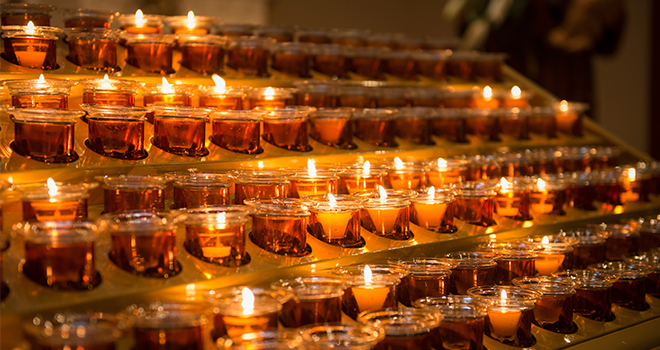Wake, Viewing or Visitation: What’s the Difference?
You’ve probably heard the words wake, viewing or visitation when discussing the funeral arrangements after a loved one passes. You may have wondered what they mean and if there is any difference between the terms. While these terms generally mean the same thing, one might be used over the others depending on where you live or your religious traditions.

Wake, viewing and visitation are often used interchangeably when referring to the gathering of family and friends in the presence of the deceased prior to the funeral service. This ceremony is typically held the day before the funeral service and usually takes place at a funeral home, church or place of worship. It can also be held for a period of several days before the funeral. Surviving family members, friends and colleagues come to pay their respects to the deceased and offer support to the family and each other.
Although the terms wake, viewing and visitation are generally synonymous terms, there are a few distinguishing characteristics if they are not used interchangeably.
At a wake or viewing the deceased is usually present in an open casket at the funeral home or church, allowing guests to “view” the body. At some services, the casket may be closed. However, at a visitation, the deceased may not be present at all. Instead, the gathering may be held at the family’s home or other location. Photos of the deceased or a video slideshow of his or her life might take the place of the open or closed casket. This visitation serves the same purpose as a wake or viewing.
These ceremonies are more informal and usually last up to several hours, allowing family and friends to stop by and depart as they wish. It is customary to offer your condolences to the family when you arrive and to introduce yourself if you are not well known to them. It’s acceptable to share a memory about the deceased and offer kind words to the bereaved. There is often a guest book nearby for visitors to sign their name before leaving.
Despite the traditional or technical meanings behind the terms and whether you call it a wake, viewing or visitation, most people will understand what you mean when referring to this ceremony.
Have you shared your funeral wishes with loved ones? Recording an end-of-life plan and sharing it with loved ones is an important step to providing family and friends with the information they will will to secure your end-of-life wishes. My Life & Wishes helps you create a secure digital record to share information about finances, insurance, wills, funeral wishes, and more. Start your free 30-day trial today.